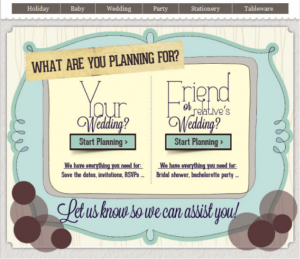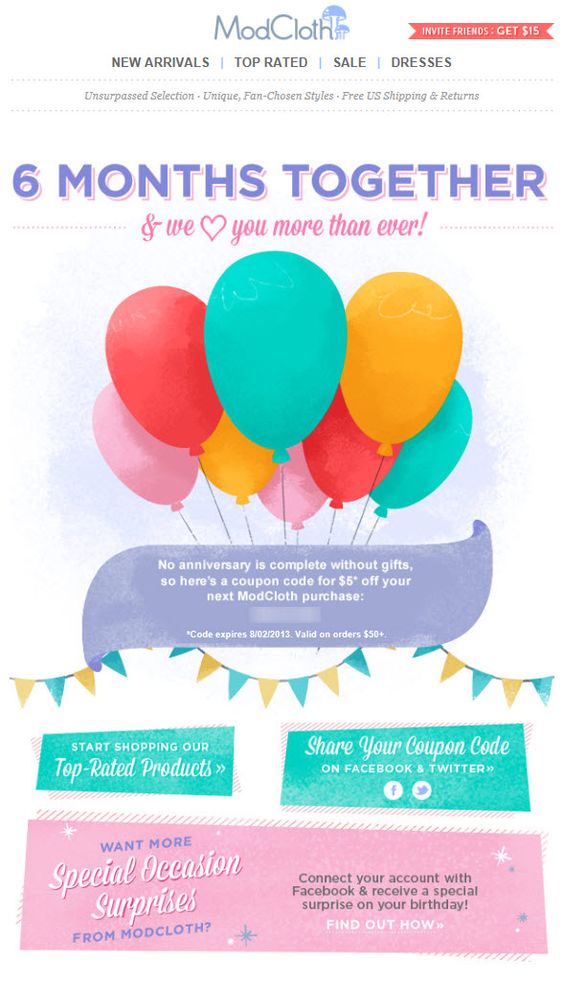Want Your Emails to Stand Out? Start Personalizing

Email is magic — everyone knows it. On average, it yields an ROI of $44 for every $1 spent. It converts high, and unlike many forms of advertising, people actually look forward to it. More than any other form of marketing, email builds an intimate relationship with consumers. And that is exactly its downfall.
Your emails convert, and so you keep on sending. But you’re not the only one. Every single day, 269 billion emails are sent. On average, it’s estimated that people are bombarded with at least 88 emails per day (and if your inbox looks anything like mine, that’s a conservative estimate). The most common reason for unsubscribing from an email list is receiving too many emails.
The truth is that in the hundreds of billions of emails sent every day, yours just aren’t that special.
But they could be.
Enter personalization. It’s a powerful tool. Subject lines that are personalized increase open rates a whopping 41.8 percent, and emails that are specific and relevant to the reader drive 18 times more revenue than non-targeted emails. But personalization is more than just slapping a name on a subject line. If you want to build a truly personal relationship with your readers, you’re going to have to try a little harder.
So without further ado, here’s my list of tips and tricks to make your personalized emails truly personal.
1. Data: choose quality over quantity.
Before you start gathering users’ data, think about what’s really relevant to your product or service. In other words, don’t collect data you’re not going to use. And if you really want to stand out in today’s data-saturated world, be the company that takes the time to actually ask consumers what they’re looking for. Here’s how Paper Style, a custom invitations company, included a simple yet important question to gather useful data. Depending on the answer, users were sent a series of emails that corresponded to their needs.

(Source)
Sometimes we spend a lot of time trying to figure what people want, instead of just asking. Don’t get me wrong, you still need to look at your data, but if you get a chance to ask, ask. This approach will help you gather high-quality data and send the right type of content.
2. Know your audience and buyer journey.
Look at your data to find answers to the following questions: (1) Who are they? (2) What are they interested in? (3) What are their goals and pain points? (4) What differentiates them? Yes, I’m talking about creating buyer personas.
For example, let’s say you’re in the email marketing business, and one of your personas is Maria. She is 25 to 35 years old, is interested learning about email marketing and her biggest pain point is not having enough time to personalize emails. Study your subscribers’ activity. If someone is categorized as Maria, you’d know to send them educational information or tips and tricks on how to better personalize emails. (Hint: this blog.) Creating personas can be a difficult and time-consuming process, but it will help you understand your audience and perfect your segmentation strategy. Here’s a good article on how to create your personas.
3. Encourage a conversation.
In order to create a relationship, you need two-way communication. Unfortunately, the vast majority of email programs are missing this. Differentiate yourself by encouraging customers to have a conversation, when applicable. For example, if someone replies back saying they’d like to stop hearing from you, don’t respond. The last thing someone wants after they’ve asked to be unsubscribed is another email. However, you should encourage a conversation regarding your product, service or company by using a poll or asking for feedback. You’ll be surprised how much customers are willing to share!
4. Start small.
Personalizing is not an easy task, but it shouldn’t be impossible. Simple personalization tactics like enhancing your “to” and “from” name and send time can make a big difference. Analyze your data to understand if there are certain groups that respond better to certain days or time of day and segment accordingly.
If it applies to your program, you can also test adding information that provides value and context to your from name. In fact, a survey conducted by Litmus showed that the majority of users look at the sender’s name before looking at the subject line or preview text. However, use the latter tactic with caution. Make sure it’s clear that the communication is coming from your brand.
5. Leverage trigger and behavioral email campaigns.
Fact: click-through rates on triggered emails are 152 percent higher than regular emails. Also, according to the DMA, over 75 percent of email-generated revenue comes from triggered campaigns. Create campaigns that will be sent when a user clicks something on your email or website, or follows a certain path. This will ensure that emails are personalized based on the user’s actions.
You can also trigger campaigns based on important dates. After all, nothing says “I care about our relationship” like celebrating special events, like birthdays or anniversaries! Here’s an example from ModCloth. The email not only celebrated their six-month anniversary, it also included a discount code and encouraged the user to connect with the brand on social media to receive more surprises. Finding more ways to connect with the user and keep them engaged with the brand should always be at the center of every communication.

6. Use real-time data.
Supercharge your email with real-time, dynamic data to make it more relevant to the reader. For example, if you’re sending an email promoting clothes you’ll want to show garments that correspond to the weather conditions in the reader’s area. Users will be able to relate to the content better if you show bathing suits where it’s 95 degrees than if it’s cold and raining, in which case you could show coats or warm clothes.
7. Treat your reader like a person.
The key word in personalization is person. The goal of your email campaign should be to improve your reader’s life in one way or another. So if you’re spending the majority of your efforts on different tactics (like adding a first name), instead of thinking about providing value through personalization, you’re doing it wrong.
Stop thinking about the data and metrics for a second, and think about the person who will receive your email. As you’re planning your emails, ask yourself the following questions: How will my email surprise and delight my customers? Will it make their day better or easier? How will these emails help the people who receive them?
At the end of the day, taking a human-centered approach to your email marketing is the key to an email campaign that provides value and builds genuine relationships with the people behind the @.
Comments
Add A Comment